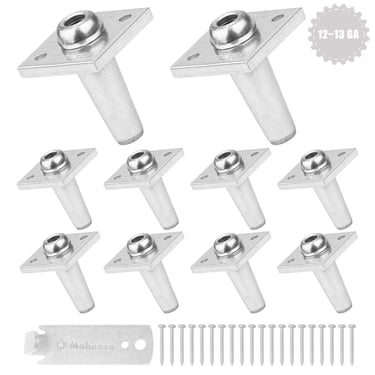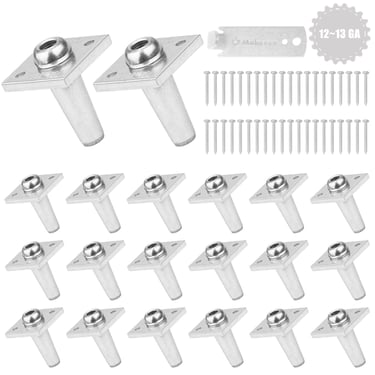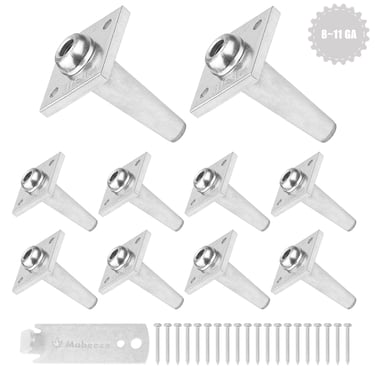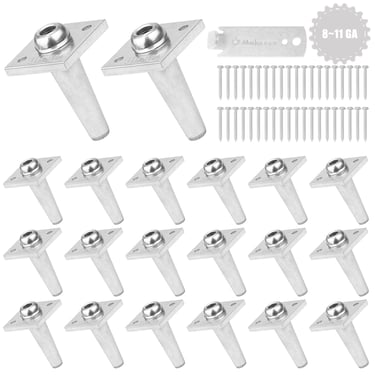Should You Add a Trellis to Your Garden? Benefits, Drawbacks & How to Build One
Curious about garden trellises? Discover the pros and cons of trellises, what plants work best, and how to build a simple DIY trellis for your garden.
GARDEN


Trellis Talk: Worth It or Just Extra Work?
You’ve probably seen one before. A few wooden slats leaning into a fence, maybe a metal arch with something green creeping up. That’s a trellis. And if your garden’s got things that like to climb (peas, beans, roses that refuse to stay put) it might be time to give them a little ladder.
Trellises aren’t just for show. They can help a scraggly patch look pulled together. Keep your plants off the ground, give them sun, give them air. But yeah, they’ve got their quirks too. Wind, weight, weather, they don’t always play nice.
So before you hammer anything into the dirt, let’s talk. What they’re good for. What might drive you nuts. And if you’re still on board after that, we’ll sketch out a simple one you can build in an afternoon, no fancy tools, no fuss.
This post may contain affiliate links and I may receive a commission for purchases made through links.
Why Use a Trellis? What’s the Big Deal?
Because sometimes plants just need a leg up.
You don’t build a trellis for decoration. You build it because your beans are crawling over the rosemary, your tomatoes are flopping sideways, and your peas can’t find the sun. A trellis solves problems. Quietly. Without fuss.
It Saves You Dirt
Short on space? Build up, not out. A trellis lets things climb, cucumbers, squash, pole beans, even tomatoes if you’re stubborn. Great for small gardens or raised beds that are already shoulder-to-shoulder with lettuce.
It Keeps Things Off the Ground
Air moves better. Leaves dry faster. Mold and mildew take a hike. Fruit ripens clean and easy, not covered in slug trails or soggy soil. Less rot, fewer pests, more harvest. Simple.
It Makes the Garden Look... Intentional
Even a crooked trellis gives shape to chaos. Morning glories find it like magic. Clematis wraps it like a scarf. Suddenly, your garden looks less like a chore and more like a choice.
What to Watch For - Trellis Trade-Offs
They’re handy, sure, but trellises come with strings attached. Literally and otherwise.
It takes a bit of doing
You’ll need supplies, maybe wood, maybe wire, maybe something you dig out of the shed and hope will hold. It won’t build itself, and the first version might wobble or lean. That’s normal. If you want something solid, it’ll cost you time, maybe a few bucks, maybe a splinter or two.
Wind laughs at weak things
Big plants get heavy. Vines don’t care if your frame was on sale. Throw in a storm or a rogue child with a soccer ball, and a wobbly trellis can go sideways fast. Sink it deep, tie it tight, and build for what’s coming, not just what’s growing.
Some plants just don’t climb
Potatoes won’t thank you. Neither will lettuce. A trellis won’t turn a shrub into a vine. So check your plant lineup before you go vertical all over the place. Some greenery likes to sprawl, not stretch.
Build a Garden Trellis Without Buzz Saws or Fancy Tools
You don’t need a power drill or a truckload of lumber. Just a few solid sticks, something to tie with, and an afternoon that isn’t pouring rain.
Pick your patch
Go where the sun hangs out most of the day
Don’t plant it where you’ll curse every time you need to water or pick something
Soft soil’s your friend, it’ll hold your posts better and won’t fight your trowel
Figure out what’s climbing
Tomatoes? They need height and muscle
Peas? Not so dramatic
Aim for 5 to 7 feet tall, tall enough to help, short enough to manage without a ladder
Stick something in the ground
Bamboo, branches, scrap wood, metal posts, whatever you’ve got that won’t fold in the wind
Space them out a couple feet, straight enough they don’t look like they’re drunk
Give each one a few firm whacks down deep so they don’t tip over after the first rain
Connect the dots
For something quick: wrap string, twine, or old rope back and forth like a lazy spiderweb
Want it to last? Thread galvanized wire between posts and tighten it up with anchor vices so it stays put all season
Doesn’t need to look perfect. It just has to hold plants, not win awards
Shake it down
Give the whole thing a little wobble
If it sways like a toddler on ice, add more ties or angle a stick as a brace
Better now than after the squash decides to get heavy
So - Should you even bother?
If you’re short on space, a trellis gives your garden legs. Helps with airflow, keeps leaves off the mud, and just plain looks good when it fills in. Doesn’t take much. Start small, don’t overthink it, and let the vines climb where they want. They usually know better anyway.
Click on the images to buy one-way anchor wire vices








